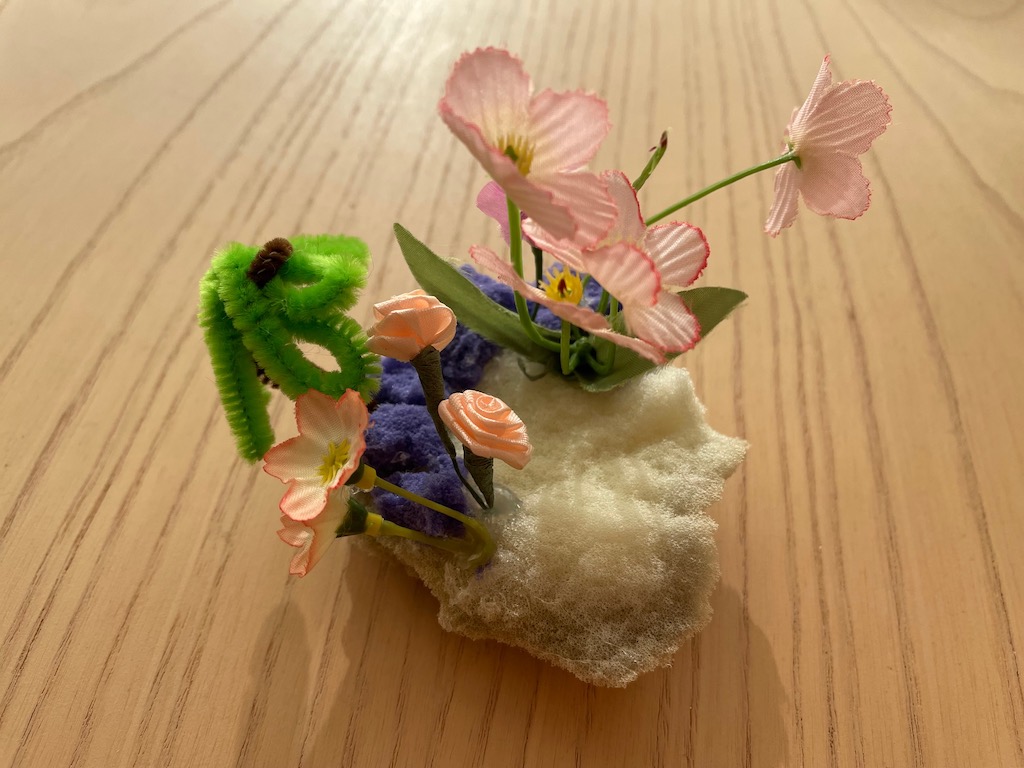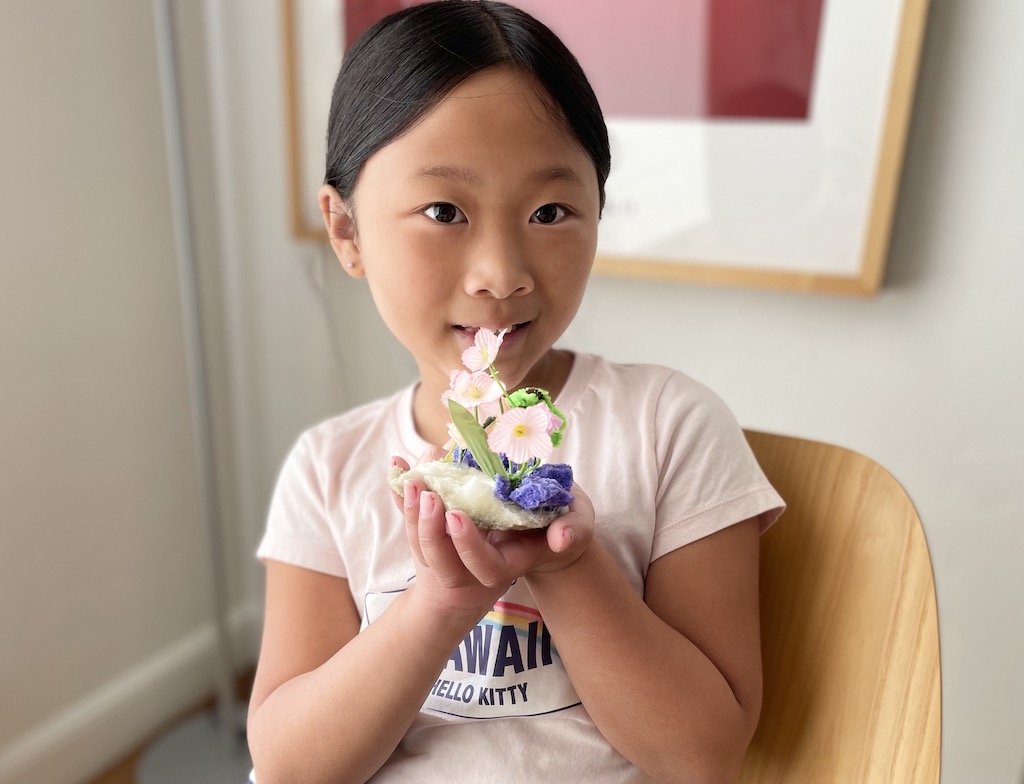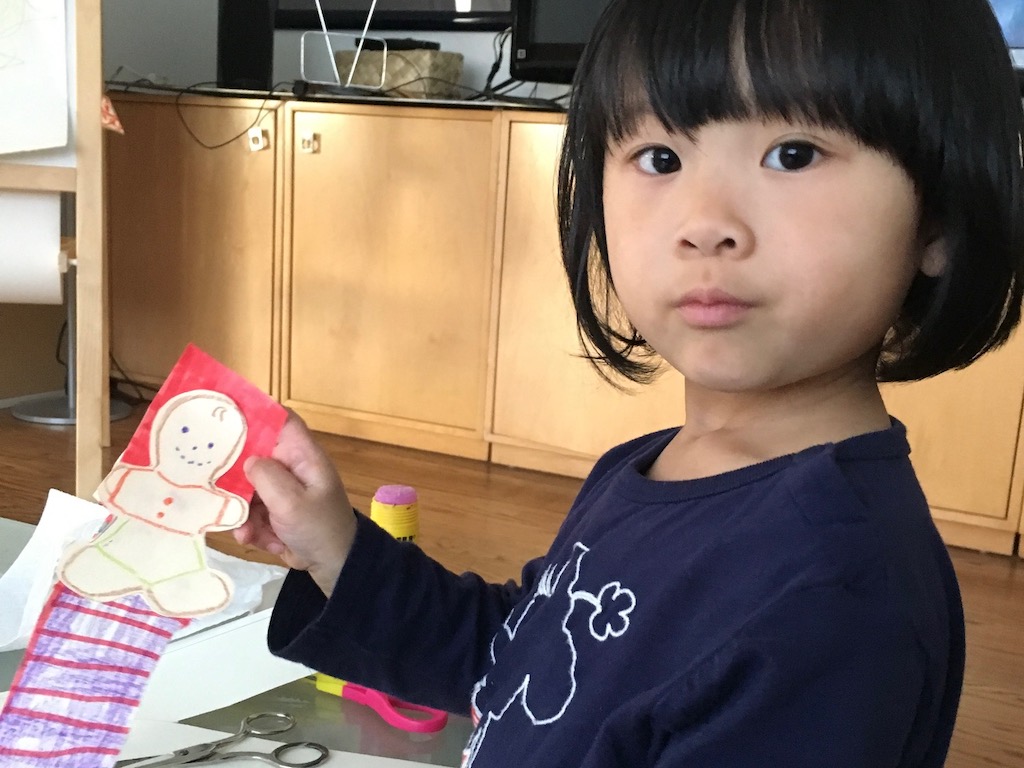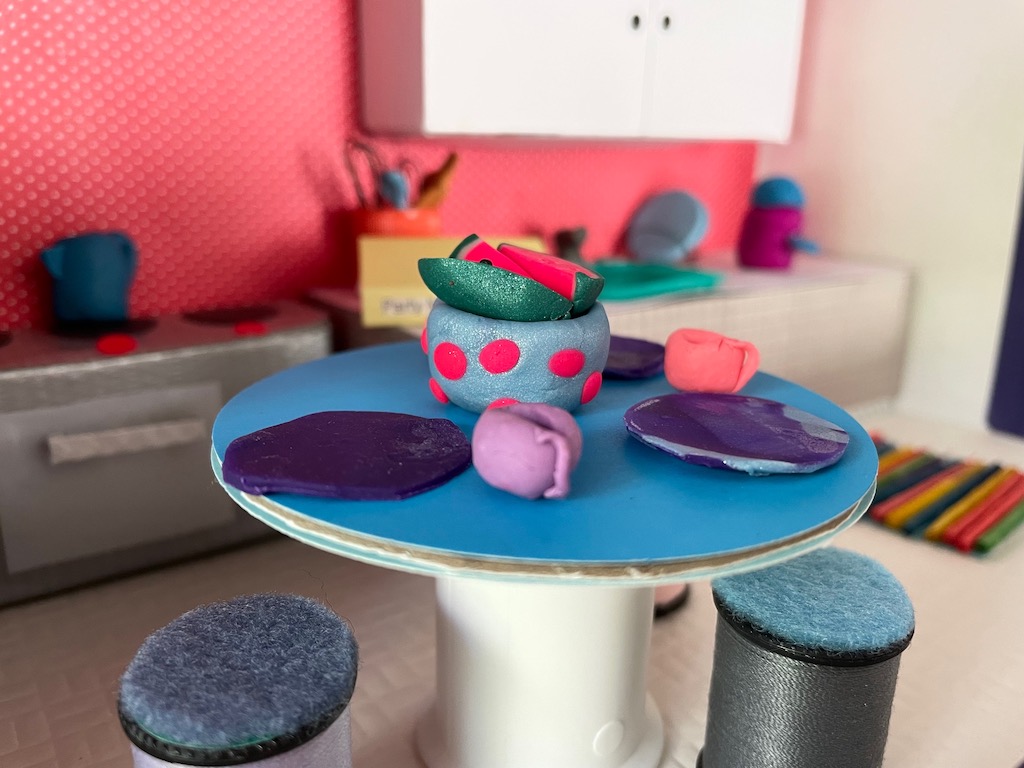The Best Environment to Inspire Imagination
When Miss T emptied her pockets at bath time during last week’s sleepover, out came bits of purple and white foam. I couldn’t imagine why.
It turned out that the foam was stuffing from a burst ball at school and she was saving it to make a present.

I was rather astounded. What could she possibly craft with these discards?
Miss T, who knows where everything is in my craft room, pulled out the glue gun. Then she rummaged through my craft boxes for flowers.
Next, she fashioned a palm tree from pipe cleaners. And yes, she created a beautiful, handmade gift.

An Environment to Inspire Imagination
How can we foster an environment to inspire such imagination? For some guidance, I looked to my mom.
Mom was highly creative and she made all sorts of crafts to sell at a local gift shop in Hilo. She was a talented flower arranger, an excellent cook, and a fine seamstress. And while she and my dad had to work hard to make ends meet, her mind was also busy creating.
I grew up spending hours in her sewing room, among fabrics, laces, buttons, and craft supplies. My mom marveled at every creation I labored over, no matter how small. And she heaped praise for each effort.
She never tossed out my stuff–even random matchboxes filled with essentially, junk. Her attitude was, if I had taken the time to save these little bits, such as colored hole punch circles, they must be precious to me.
When my mom moved from Hilo to live with us, she brought my candy box filled with miniature hats and other objects I had made at eleven or twelve. She couldn’t bring herself to toss them, although she had to abandon many possessions when she downsized.

The Outcome of an Inspired Environment
Just as a child surrounded by books will take to reading, kids who live among interesting materials and are encouraged to create, get creative.
Having grown up in such an environment, creativity is one of the most important drivers in my life. I have made a career in journalism and public relations to satisfy this need.
While these careers happen to suit my particular skillset, so many other jobs benefit from having that spark of creativity–engineers, scientists, architects, designers, and more.
And, simply doing something creative for yourself is its own reward.

Developing an Environment to Inspire Imagination
Here are some ideas to fashion a climate for creativity:
- First, try to asses a child’s interests and likes–whether it’s playing with cars or making jewelry. Help them to build on their interests with appropriate projects.
- Be encouraging. Give guidance, but don’t shoot down their ideas. Explore together how you can help to support their vision. My mom was always conscious of not denigrating our efforts. If we drew a picture that was completely incomprehensible, instead of asking, “What is this?” she would say, “Tell me the story of this picture.”
- Respect their “treasures.”
- If the kids don’t have ideas of their own, look for projects that reflect their interests on websites like Pinterest, or in books from the library.

Having the Right Supplies
It helps if when the child needs something to make something, the tools and materials are already at hand. Here are the essential supply lists from my craft room.
I store my supplies in shallow, flat cases and clear storage bins, contents labeled with a label maker for easy identification.
Not everything has to be purchased. Look around the house for items you can repurpose. For example, last week we made a marble run with cardboard tubes and a sturdy lid.

Last year for my birthday, Miss T made me a phone charging stand which looks like a multi-colored throne. She used polymer clay to fashion it.
It’s an example of how a child can explore a need, come up with a solution, and built it herself–in a most whimsical and charming way.
Polymer clay, such as Sculpey, is a great material to inspire imaginations because kids can fashion whatever they want, turning what’s in their head into a reality. According to the websites I’ve seen, polymer clay appears to be safe for kids to use, but you’ll want to do your own research to feel reassured.
Some Call Me Grandma Projects

Here are some projects that use throwaway materials in new ways. These are especially good because they can kickstart your child’s imagination when they can see everyday trash in a new light.
- Miss T and I used die-cut, foot-shaped cardboard stiffeners that come with new sox to create footprint wall art.
- Little N and I made a book from magazine cutouts.
- Turn a large cardboard carton into a walk-in house.
- Make spiffy cars from toilet paper rolls. Little N and I had fun with those.
- Miss T and I created a dollhouse from shoeboxes and furnished it with found items. It will open a child’s eyes to the possibility of the everyday things around them. An empty Pringles container for a bathtub? Crumpled bubble wrap to fill the tub? Why not!
- Create a challenge for kids by giving them some throwaway materials and asking them to design something with them.
Don’t forget to sign up for my email newsletter! Every Wednesday, I’ll give you a new idea for an activity or insight to nurture the little ones in your life. Come visit!